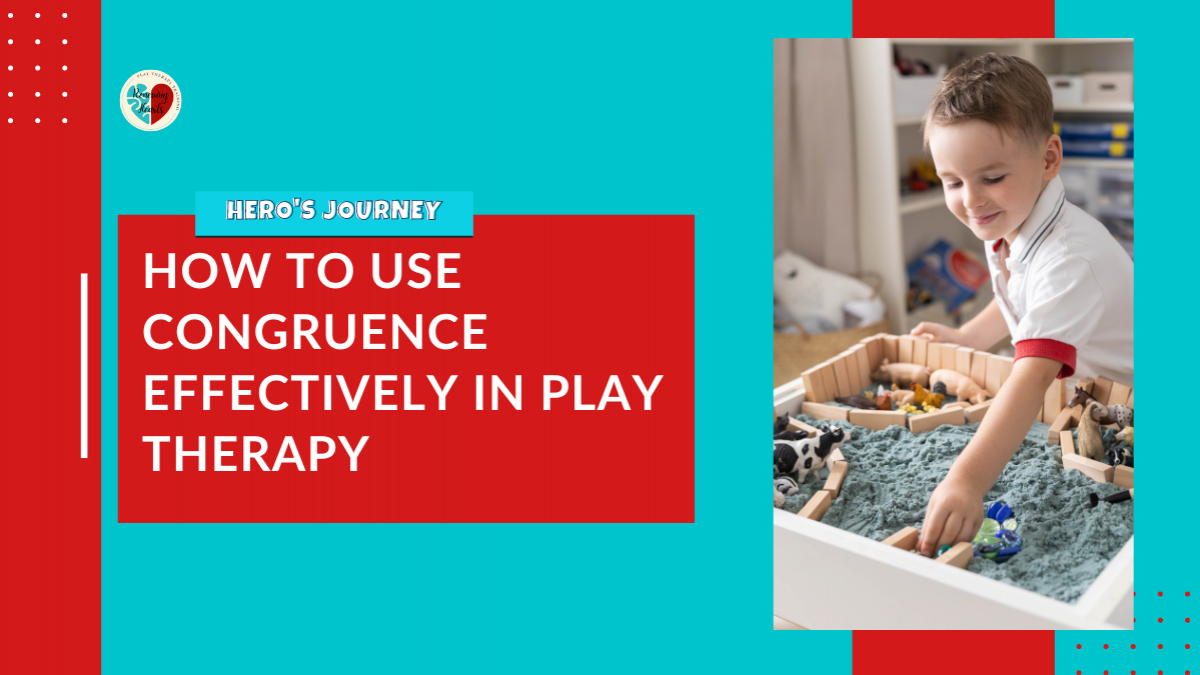How to Use Congruence Effectively in Play Therapy

Today, we'll talk about congruence and its profound impact on therapeutic relationships, particularly in the realm of play therapy.
Congruence serves as a cornerstone in establishing trust and safety within the therapeutic space, laying the groundwork for meaningful change and growth in children.
Understanding Congruence:
Congruence, in essence, refers to the alignment between our internal experiences and their external expression. It encompasses our emotions, thoughts, and physiological responses, harmonized with our outward expressions such as facial cues, body language, and verbal communication. This alignment is paramount in fostering authentic connections with clients, especially in play therapy settings where non-verbal communication often takes precedence.
The Role of Congruence in Therapeutic Rapport:
In the context of play therapy, congruence holds immense significance as it forms the bedrock of the therapeutic relationship. The ability to authentically convey unconditional positive regard, empathy, and self-awareness lays the groundwork for trust and emotional safety within the playroom. This, in turn, allows children to explore and process their inner world freely, knowing they are met with understanding and acceptance.

Developing Congruence in Play Therapy:
Achieving congruence is a journey that requires self-awareness, reflection, and ongoing practice. Therapists must attune to their internal experiences, discerning when they are aligned with their external expressions and when discrepancies arise. This heightened awareness empowers therapists to make informed decisions in real-time, ensuring their responses benefit the child's therapeutic journey.
Exploring the Experience-Expression Congruence Model:
One compelling framework for understanding congruence is the Experience-Expression Congruence Model, as articulated by Ray, Jayne, and Stulmaker. This model emphasizes the therapist's ability to navigate between self-awareness and client attunement, facilitating a seamless flow of interaction grounded in authenticity and empathy.
Navigating Challenges with Congruence:
While striving for congruence is essential, it is essential to acknowledge that no therapist can maintain 100% congruence at all times. External factors, personal experiences, and client dynamics can influence a therapist's ability to remain fully aligned. In such instances, therapists must engage in self-compassion and utilize effective coping strategies to re-establish congruence and rapport.
Final Thoughts:
Congruence stands as a guiding principle in the practice of play therapy, shaping the quality of therapeutic relationships and the efficacy of interventions. By cultivating self-awareness, embracing authenticity, and leveraging congruence, therapists can create nurturing spaces where children feel seen, heard, and supported on their journey towards healing.
Interested in delving deeper into the world of play therapy? Join us in Play Therapy Academy, where you'll gain access to expert guidance, peer support, and transformative learning experiences. Together, let's unlock the power of play in facilitating healing and growth in children.
Related Article: https://psycnet.apa.org/record/2013-45574-002
Categories: : Congruence, Play Therapy, Podcast, Therapeutic Rapport
 Cathi Spooner
Cathi Spooner 
